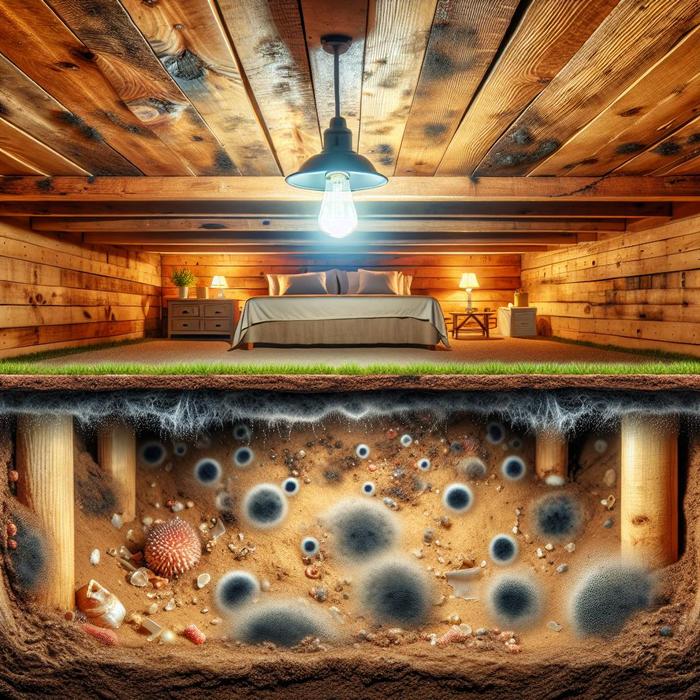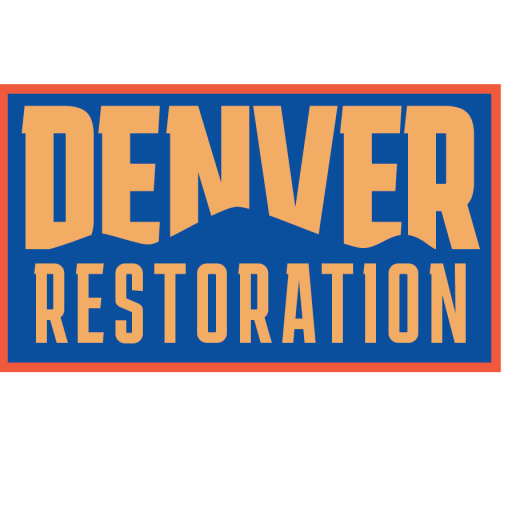Understanding the Perils of Mold
Mold is no trivial issue, particularly in spaces that are out of sight such as your home’s crawl space. This fungal invader can pose grievous environmental and health safety risks, making its detection of immense importance. By better understanding the tell-tale signs of mold in a crawl space, you can take decisive action to ensure the well-being of yourself and your property.
The Silent Intruder: Mold in Your Crawl Space
Crawl spaces are the perfect breeding ground for mold, thanks to their penchant for moisture accumulation and relative isolation. Not only does the cultivation of mold run the risk of damaging building structures, but it can also elicit a range of health issues. Respiratory ailments, allergic reactions, and headaches are a few health problems that could stem from exposure to mold.
However, the true danger of mold lies in its insidious nature. Not all mold is visible or detectable through smell. Sometimes, the signs of mold in a crawl space are subtle and require a keen sense of observation. For further information about the potential health risks posed by mold, visit this site.
Spotting the Signs of Mold in Your Crawl Space
Accurately identifying mold in your crawl space can be a daunting task, especially without any guidance. However, understanding the typical symptoms of mold can provide you with the knowledge and security to take the right steps.
Musty Odors
Mold often gives off a musty, earthy aroma that can permeate through your home’s floors. If you notice a persistent unpleasant smell, it might be time to consider an inspection.
Visible Mold Growth
Although mold in a crawl space isn’t always visible, you might find tell-tale signs in nearby areas. Look for unusual discoloration or fuzzy growth in these regions.
Allergic Symptoms and Respiratory Issues
Experiencing unexplained allergic reactions or respiratory distress could suggest the presence of mold. While these symptoms are not definitive proof of mold, they can serve as a warning to investigate further.
The Path Forward: What To Do When You Discover Mold
When you observe alarming signs of mold in your crawl space, it’s crucial to act decisively to ensure the safety of your home and health. Quick and effective measures include professional mold inspections, thorough cleaning and drying, and sealing off the crawl space from moisture.
Inspecting for mold is not a task for the inexperienced. Learn about professional mold removal procedures in this informative article to understand the steps involved in a thorough inspection.
Cleaning and Drying
Mold growth thrives in damp conditions. After a mold infestation has been tackled, it’s important to ensure the affected area is thoroughly cleaned and dried. Specialized restoration techniques and equipment are often employed to achieve this end.
Sealing Off Moisture
In the long term, preventing moisture from entering the crawl space is the most effective way to guard against mold. Utilizing a professional service that takes care of moisture control can be your best line of defense.
Maintaining a Mold-Free Environment
Once the immediate threat of mold has been addressed, ongoing vigilance is crucial to prevent recurrence. Regular inspections, moisture control, and swift action at the first sign of problems can keep your crawl space mold-free.
For more information on how to remove mold from your bathroom and other areas, check out this handy guide
Remember, early detection and prompt action can spell the difference between a quick fix and extensive damage. Keep your eyes and noses alert for signs of mold in your crawl space to maintain a safe and healthy living environment.
The Enigma of Moisture: A Major Catalyst in Mold Growth
The connection between moisture and mold growth is crucial to understand when it comes to safeguarding your home. Moisture is often the lifeblood of mold, a key enabler that allows it to thrive in environments such as a crawl space. Keep in mind that moisture can come from many sources, including damp seasonal weather, leaky pipes, or even humidity in the air. Visit this link to understand how moisture could seep into your crawl space and the necessary actions to counteract it.
The Looming Threat: Underground Water Flow
An oft-overlooked aspect when considering moisture build-up in crawl spaces is the potential for underground water flow. It’s not uncommon for properties to be located above aquifers or bodies of permeable rock that can carry water. Given the close proximity to the ground, crawl spaces are at risk of water intrusion from these underground flows, posing an ideal condition for mold to flourish.
The Silently Seeping Culprit: Condensation
Another potential contributor to moisture build-up in your crawl space is condensation. This occurs when warm air, which carries more moisture, cools down. Because crawl spaces typically have lower temperatures than the rest of your house, it’s often a hotspot for this kind of moisture accumulation. This condensation can create an alarmingly moist environment that mold can exploit, rounding out its silent invasion well under your floorboards.
Battling the Mold Menace: The Importance of Professional Help
Once you’ve discovered signs of mold, prompt and professional intervention is essential. One of the significant tasks for experts in this field is assessing the extent of the issue. They leverage their expertise and high-tech equipment to perform a damage assessment and estimation. Such a meticulous review of the situation sets the stage for effectively combating the mold issue and strategizing the restoration process.
For a closer look at how professionals handle mold containment and removal, explore this article
The Action Plan: Mold Remediation Techniques
A professional restoration plan usually combines several restoration techniques and specialized equipment to ensure the eradication of mold and avoid recurrence. This could involve the use of industrial air movers and dehumidifiers to dry out the crawl space, antimicrobial treatments to kill the mold, encapsulating to seal off the crawl space from moisture, and other procedures as required by the situation.
The Role of Insurance in Mold Remediation
Homeowner insurance can prove invaluable in managing the financial consequences of mold infestations. This is dependent on your policy, of course, but many will cover mold damage if it’s a result of a ‘covered peril.’ Understanding the nuances of insurance and legal compliance in mold remediation is another facet where professional help proves invaluable.
Raising the Barrier: Effective Mold Prevention Strategies
Beyond the immediate remediation, ongoing preventive measures are an integral part of maintaining a healthy, mold-free environment. This involves strategies requiring homeowner vigilance, like proper drainage systems to prevent excessive moisture and regular inspections to catch any early signs of mold growth.
Moisture Control: The Key to Prevention
Effective moisture management is the first line of defense against mold in your crawl space. Ensuring good ventilation, reducing the potential for condensation, and correcting any groundwater issues are all keys to keeping excessive moisture at bay.
Regular Inspections: Staying a Step Ahead
Scheduling regular inspections is another proven strategy for preventing mold growth. This can either be done personally or professionally, depending on your comfort and knowledge level. Recognizing unusual conditions early provides the opportunity for prompt action.
Following these principles can help homeowners create a mold-resistant environment. Visit this page to dig deeper into mold prevention tips.
The Potential of Technology: Using Tech Tools for Mold Detection
In some instances, leveraging technology can play a significant role in detecting and managing mold. Specialized devices can identify moisture levels in your crawl space and alert you to any significant changes. These tools, coupled with regular inspections, improve the odds of catching any early signs of mold.
The Bottom Line
Living with mold in your crawl space is not just detrimental to your health, it’s also potentially damaging to the structural integrity of your property. Understanding the signs, knowing how to react, and recognizing preventative measures are all crucial steps towards safeguarding your home against this silent invader. The fight against mold is not a one-time affair; it’s an ongoing battle that requires perpetual vigilance and prompt action.

